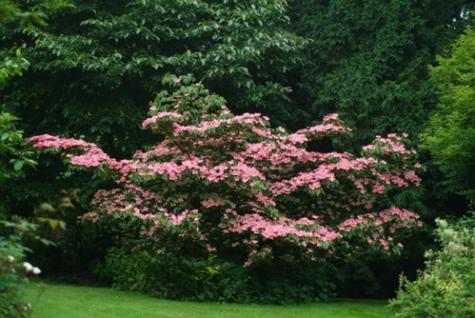50 Years of Passion
Gardening in the same place for more than fifty years is a rare privilege. Princess Sturdza used this opportunity to transform a scrubby valley into a wonderful haven for both botanists and aesthetic gardeners. Its development over five decades is clearly visible, both in the varying maturity of the plants and in the evolution—or sometimes the rarity—of certain varieties. In addition to being a living work of art, this garden also serves as a remarkable testament to the evolution of gardening since the mid-20th century.
The story began in 1955, with the purchase of this property, which had belonged to the famous composer Albert Roussel from 1922 to 1937. The house was surrounded by marshland on an apparently flat terrain. After two years of work, including modifying the access road, the family moved in, and the Princess began clearing land to the north, in a woodland of pines and oaks…

The 1960s: The Woodland and the Rhododendrons
« At first, the woods surrounding the house were very dense, overrun with brambles and wild ferns. »
This statement, familiar to all visitors, may now seem almost commonplace. Many gardens began this way. The Princess herself undertook the challenge.
« I forced myself to pull out the roots of bracken ferns for at least two hours every day. If I missed a day, I would do double the next. »
The soil, sandy, fresh, and acidic, was ideal for rhododendrons. The first plants, layers of Rhododendron Halopeanum and Rhododendron Griffithianum, arrived from the nearby Bois des Moutiers, gifted by Guillaume Mallet. They were planted along the first edge of the woodland, which is now the heart of the area. To complement the soft pink shades of these two species, the Princess interspersed several ‘Pink Pearl’ rhododendrons, which are a deeper pink. In the foreground, Japanese azaleas ‘Hino-de-Giri’ enhanced the pink palette even further. Gradually, the woodland became home to a diverse collection of species and « primary » hybrids, grouped by color or similarities in foliage.
There is the path of blue rhododendrons, featuring several clones of R. Augustinii, as well as R. Impeditum, R. Fastigiatum, R. Lavandulaceum, and others. Large-leaf rhododendrons like R. Rex, R. Fictolacteum, and R. Hodgsoniigrow around the small pond. Vibrant colors are not absent: several orange azaleas echo each other near the pond. Rhododendrons ‘Jenny Elisabeth’, with their stunning scarlet-red blooms, contrast with the white of towering tree heathers. Very large Rhododendron Cynthia (raspberry red) and ‘Alarm’ (deep garnet red) brighten various corners in turn.
The woodland soon expanded eastward, along three parallel paths that nearly reach neighboring properties. Many other species enriched the collection, from the very early R. Mucronulatum, R. Moupinense, and R. Dauricum ‘Sempervirens’blooming as early as February, to the very late ‘Polar Bear,’ which produces its large, fragrant white flowers into late August. Evidence that rhododendrons have found a suitable habitat here lies in their self-seeding on moss carpets. The Princess selected several ‘Polar Bear’ clones that bloom successively, as well as yellow azaleas (R. Luteum) that flower a week apart, further extending the periods of interest.
Many other species complement the rhododendron collection, including a towering Drimys winteri, a Trochodendron aralioides nearly 6 meters tall, giant Eucryphia (E. x nymansay) covered in white flowers in August, and an entire path of hybrid camellias blooming from December to late April. Among the botanical curiosities are one of the oldest Liriodendron chinense planted in France and likely one of the very first Acer davidii.



 English
English

































































